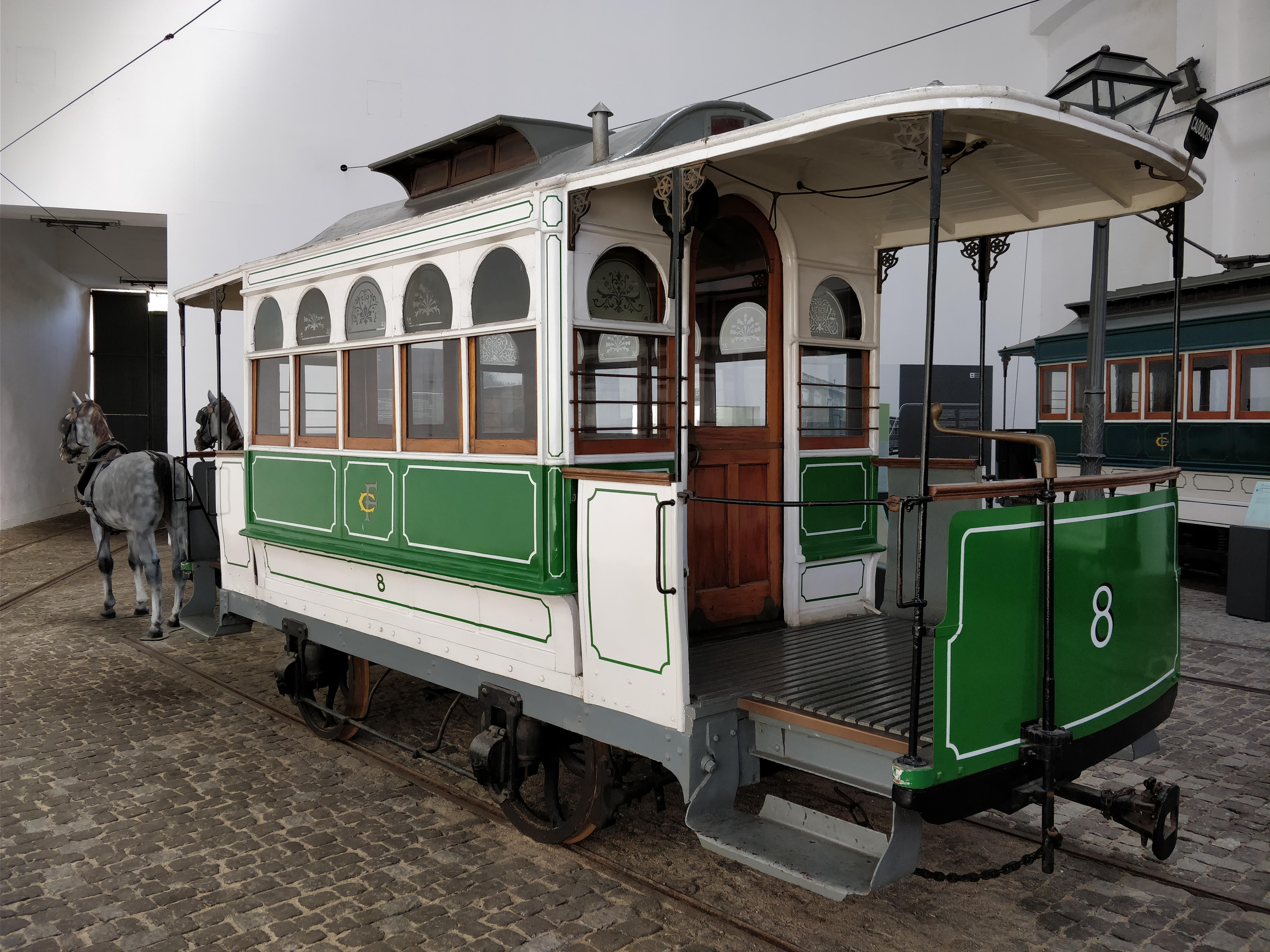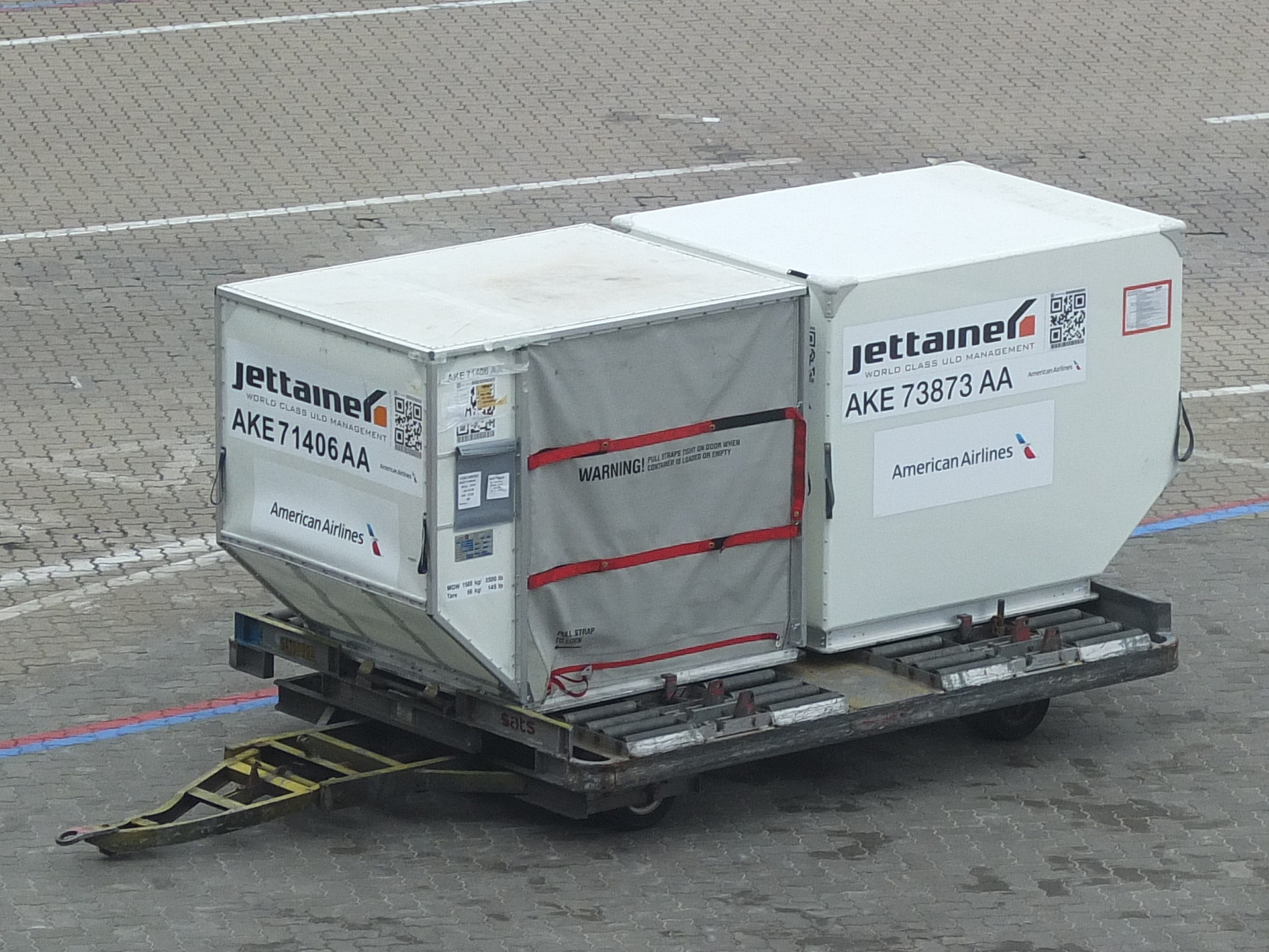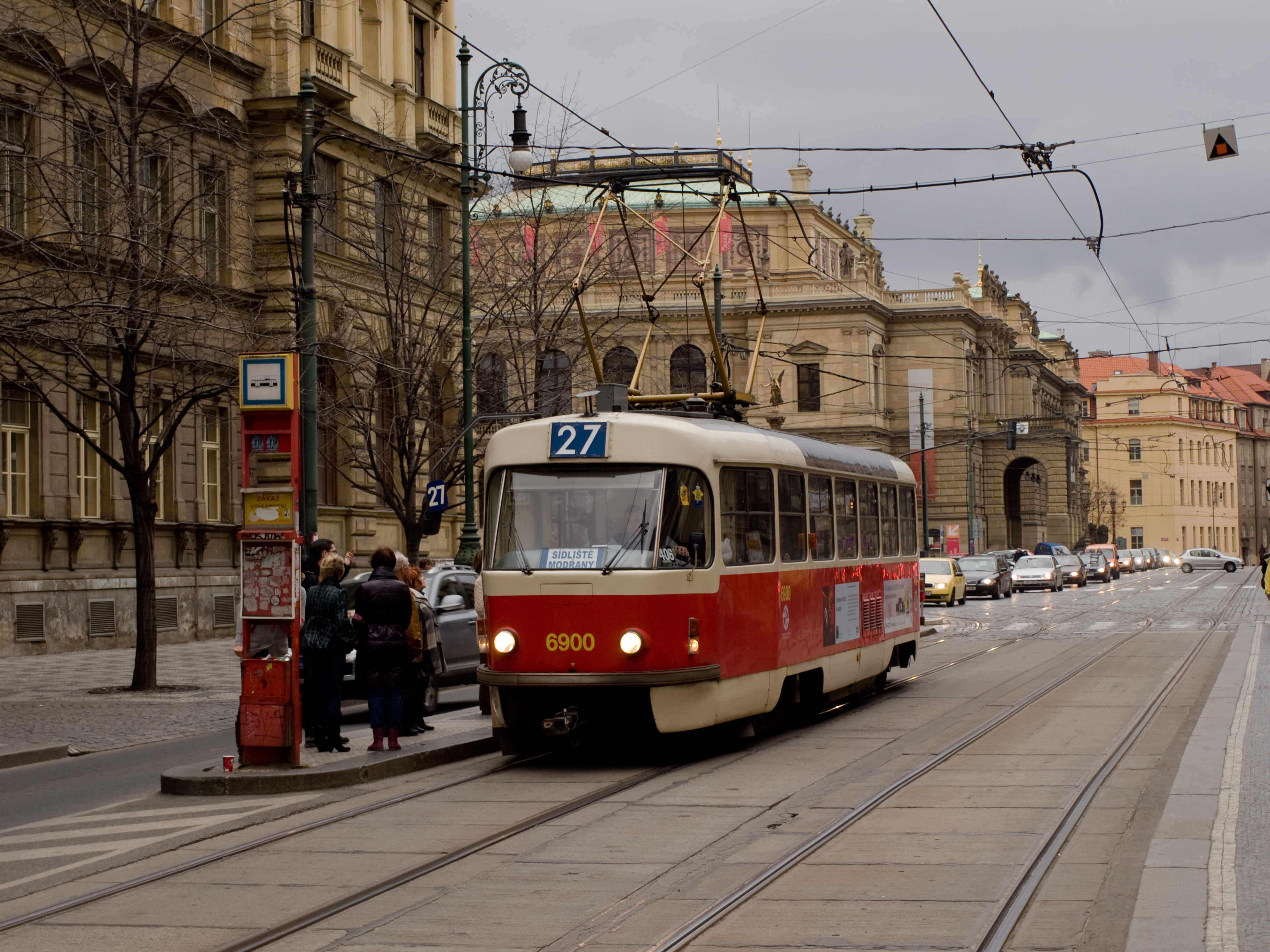|
Museu Do Carro Eléctrico
The Porto Tram Museum is a museum operated by the Sociedade de Transportes Colectivos do Porto. It was inaugurated in 1992 and is installed in a former thermoelectric power station next to the River Douro in Massarelos, Porto, Portugal. It exhibits material related to the history of trams in Porto. The collection contains 16 electric cars, 5 trailers, and two maintenance vehicles as well as the former equipment of the power plant, which provided electricity for the tram lines. The building The construction of the building as a power plant was completed in 1915. It consists of two large halls that were, respectively, the hall for the steam generators (boilers) and the engine room. Until the 1940s the power station produced enough energy to power the tram network. However, with the increase in the number of electric cars in circulation, the trams became partially dependent on the city's power supply and in the 1960s energy production at the plant ceased, although it continues t ... [...More Info...] [...Related Items...] OR: [Wikipedia] [Google] [Baidu] |
Sociedade De Transportes Colectivos Do Porto
STCP (Sociedade de Transportes Colectivos do Porto, E.I.M., S.A., lit. ''Porto Public Transport Society'') is the public transport company that runs the bus and tram service in Greater Porto, Portugal. Created in 1946, it took over the Porto tram system from its privately owned predecessor and continues to operate it today, but the formerly large tram system now has only three lines, which are heritage tram lines, and the STCP network is now mostly bus service. STCP does not operate the city's light rail system, Porto Metro, but owns 25% of it.Webb, Mary (Ed.) (2009). ''Jane’s Urban Transport Systems 2009-2010'', pp. 276–278. Coulsdon, Surrey (UK): Jane's Information Group. . It is a public company controlled by a board responsible to the central government and had about 1,500 employees in 2009. STCP operates 83 bus routes – of which 11 are late-night-only routes – and the bus service covers 539 km of routes. History STCP's name originally was ''Serviço de Tran ... [...More Info...] [...Related Items...] OR: [Wikipedia] [Google] [Baidu] |
Compagnia Generale Di Elettricità
The Compagnia Generale di Elettricità S.p.A. (General Electric Power Company) was an Italian joint-stock company founded in 1921 in Milan. The company was widely know in Italy as simple acronym CGE, it was primarily owned and managed by General Electric USA. CGE manufactured electrical applications, simple high voltage transformers, generators, powerplants and engines for trains and trolleybus A trolleybus (also known as trolley bus, trolley coach, trackless trolley, trackless tramin the 1910s and 1920sJoyce, J.; King, J. S.; and Newman, A. G. (1986). ''British Trolleybus Systems'', pp. 9, 12. London: Ian Allan Publishing. .or trol ...es in particular. It manufactured a certain number of its products for the European market. In the transport sector, CGE was well known for its electric components that equipped many rolling stocks, trolley buses, railway and locomotive applications. During its active period, CGE competed against two Italian companies: Ansaldo and "Italian ... [...More Info...] [...Related Items...] OR: [Wikipedia] [Google] [Baidu] |
Transport In Porto
Transport (in British English), or transportation (in American English), is the intentional movement of humans, animals, and goods from one location to another. Modes of transport include air, land (rail and road), water, cable, pipeline, and space. The field can be divided into infrastructure, vehicles, and operations. Transport enables human trade, which is essential for the development of civilizations. Transport infrastructure consists of both fixed installations, including roads, railways, airways, waterways, canals, and pipelines, and terminals such as airports, railway stations, bus stations, warehouses, trucking terminals, refueling depots (including fueling docks and fuel stations), and seaports. Terminals may be used both for interchange of passengers and cargo and for maintenance. Means of transport are any of the different kinds of transport facilities used to carry people or cargo. They may include vehicles, riding animals, and pack animals. Vehicles may inc ... [...More Info...] [...Related Items...] OR: [Wikipedia] [Google] [Baidu] |
Tram Transport In Portugal
A tram (called a streetcar or trolley in North America) is a rail vehicle that travels on tramway tracks on public urban streets; some include segments on segregated Right-of-way (transportation), right-of-way. The tramlines or networks operated as public transport are called tramways or simply trams/streetcars. Many recently built tramways use the contemporary term light rail. The vehicles are called streetcars or trolleys (not to be confused with trolleybus) in North America and trams or tramcars elsewhere. The first two terms are often used interchangeably in the United States, with ''trolley'' being the preferred term in the eastern US and ''streetcar'' in the western US. ''Streetcar'' or ''tramway'' are preferred in Canada. In parts of the United States, internally powered buses made to resemble a streetcar are often referred to as "trolleys". To avoid further confusion with trolley buses, the American Public Transportation Association (APTA) refers to them as "trolley- ... [...More Info...] [...Related Items...] OR: [Wikipedia] [Google] [Baidu] |
Public Transport In Portugal
Transport in Portugal is well-developed and diversified. Portugal has a network of roads, of which almost are part of a 44 motorways system. Brisa is the largest highway management concessionaire. With 89,015 km2, Continental Portugal has 4 international airports located near Lisbon, Porto, Faro and Beja. The national railway system service is provided by Comboios de Portugal. The major seaports are located in Leixões, Aveiro, Figueira da Foz, Lisbon, Setúbal, Sines and Faro. Roads In 1972, Brisa was to construct of roadways by the end of 1981. The first priority was a highway designated as A1, a stretch reaching from the capital of Lisbon north to Porto, Portugal's second-largest city. This highway would become a crucial link to the industrial activity in the north of the country and experience the highest traffic volumes in Brisa's network. Construction also began on the A2, which was projected to reach from Lisbon to resort areas on the southern coast. Two ... [...More Info...] [...Related Items...] OR: [Wikipedia] [Google] [Baidu] |
Emery (rock)
Emery, or corundite, is a dark granular rock used to make abrasive powder. It largely consists of corundum ( aluminium oxide), mixed with other minerals such as the iron-bearing spinels, hercynite, and magnetite, and also rutile ( titania). Industrial emery may contain a variety of other minerals and synthetic compounds such as magnesia, mullite, and silica. It is black or dark grey in colour, less dense than translucent-brown corundum with a specific gravity of between 3.5 and 3.8. Because it can be a mixture of minerals, no definite Mohs hardness can be assigned: the hardness of corundum is 9 and that of some spinel-group minerals is near 8, but the hardness of others such as magnetite is near 6. Crushed or naturally eroded emery (known as ''black sand'') is used as an abrasive—for example, on emery boards and emery cloth. It is also used as a traction enhancer in asphalt and tarmac mixtures. Turkey and Greece are the main suppliers of the world's emery. These two countr ... [...More Info...] [...Related Items...] OR: [Wikipedia] [Google] [Baidu] |
Brakeman
A brakeman is a rail transport worker whose original job was to assist the braking of a train by applying brakes on individual wagons. The earliest known use of the term to describe this occupation occurred in 1833. The advent of through brakes, brakes on every wagon which could be controlled by the driver, made this role redundant, although the name lives on in the United States where brakemen carry out a variety of functions both on the track and within trains. By country Germany In Germany, the brakemen occupied brakeman's cabins on several or even all wagons in a train and would operate the wagon brakes when signaled by the engine driver. It was a dangerous and uncomfortable role, especially in winter when it was not uncommon for brakemen to freeze to death in the unheated cabins. The function was abolished in the 1920s with the introduction of air brakes, which could be controlled by the engine driver. United Kingdom In the UK, "brakeman" was an alternative term ... [...More Info...] [...Related Items...] OR: [Wikipedia] [Google] [Baidu] |
Dolly (trailer)
A dolly is an unpowered vehicle designed for connection to a tractor unit, truck or prime mover vehicle with strong traction power. United States Classification by axle configuration There are several types of dolly bogie: * Full trailer - 2 axle (4 wheels), with a draw bar which also controls the trailer's front axle steering. The draw bar does not take load of the full trailer. Heavy full trailer needs to have its own brakes remotely controlled by the prime mover vehicle. * Semi-trailer - 1 axle (2 wheels), without the front axle but have a landing gear. Large semi-trailer of truck size is designed for connection via the fifth wheel on the tractor unit or the semi-trailer truck. Small semi-trailer such as travel trailer and boat trailer is designed for connection via a tow hitch of a passenger vehicle. Either the fifth wheel or the tow hitch takes up to half the load of the semi-trailer. * Road train - special large dolly bogie equipped with a fifth wheel for further conne ... [...More Info...] [...Related Items...] OR: [Wikipedia] [Google] [Baidu] |
Matosinhos
Matosinhos, Porto, Portugal () is a city and a municipality in the northern Porto district of Portugal, bordered in the south by the city of Porto (8 km from the city centre). The population in 2011 was 175,478, and covered an area of approximately . The urban centre, the city proper, had a population of 45,703 in 2001. History The oldest vestige of human settlement in this territory extend back thousands of years and include instruments and Paleolithic artefacts, collected along the old beaches (specifically Boa Nova and Almeiriga). The settlement of the land began sometime 5000 years ago, during the Neolithic, as evidenced from various funeral monuments and dolmens sporadically situated in Lavra, Perafita, Leça do Balio, Santa Cruz do Bispo, Guifões and São Gens. At the end of the Bronze Age, much like most of the northwest peninsula, settlements expanded into proto-urban agglomerations at high altitudes ( castros), associated with a culture with specific character ... [...More Info...] [...Related Items...] OR: [Wikipedia] [Google] [Baidu] |
Zorra 01
Zorra is a township in Oxford County, situated in south-western Ontario, Canada. A predominantly rural municipality, Zorra was formed in 1975 through the amalgamation of East Nissouri, West Zorra and North Oxford townships. It is best known for the Highland Games weekend held each summer in Embro, celebrating the heritage of the Scottish pioneer families which grew from the 1830s to form nearly a quarter of the county's population. Government The municipal government is led by a mayor and a councillor from each of the township's four geographic wards: * Ward 1: Southern portion of township, the former North Oxford township (including Banner, Golspie), excluding Thamesford * Ward 2: Thamesford * Ward 3: Northwest portion of township, the former East Nissouri township (including Kintore, Uniondale) * Ward 4: Northeast portion of township, the former West Zorra township (including Embro, Maplewood) Marcus Ryan is the current mayor, following the 2018 Ontario municipal elections. ... [...More Info...] [...Related Items...] OR: [Wikipedia] [Google] [Baidu] |
Hansa (company)
Hansa-Automobil Gesellschaft m.b.H was a German car brand established in 1905, which in 1914 was merged with ''Norddeutsche Automobil und Motoren AG'' (NAMAG) into Hansa-Lloyd-Werke A.G.. From 1929 to 1931 it was taken over by the Borgward group. Hansa was based in the Bremen suburb of Hastedt. History Founding The first cars were licence-built Kriéger electric vehicles, beginning in 1905. Petrol- engined models followed in 1908 with 3685 cc engines, but few were made. Belgian electrical engineer, Paul Mossay, was employed for four years as chief engineer, designing both engines and electric vehicles. In 1914 the company merged with Lloyd to become Hansa-Lloyd Werke AG. The company continued to change names and badging on a number of occasions and were never on a sound financial footing. Interwar years Most of the Hansa/Lloyd cars made during this period were sold as Hansa with the Hansa-Lloyd name mainly attached to commercial vehicles, with the exception of the ''T ... [...More Info...] [...Related Items...] OR: [Wikipedia] [Google] [Baidu] |
Tram250 AtPortoTramMuseum
A tram (called a streetcar or trolley in North America) is a rail vehicle that travels on tramway tracks on public urban streets; some include segments on segregated right-of-way. The tramlines or networks operated as public transport are called tramways or simply trams/streetcars. Many recently built tramways use the contemporary term light rail. The vehicles are called streetcars or trolleys (not to be confused with trolleybus) in North America and trams or tramcars elsewhere. The first two terms are often used interchangeably in the United States, with ''trolley'' being the preferred term in the eastern US and ''streetcar'' in the western US. ''Streetcar'' or ''tramway'' are preferred in Canada. In parts of the United States, internally powered buses made to resemble a streetcar are often referred to as "trolleys". To avoid further confusion with trolley buses, the American Public Transportation Association (APTA) refers to them as "trolley-replica buses". In the United ... [...More Info...] [...Related Items...] OR: [Wikipedia] [Google] [Baidu] |





.jpg)

